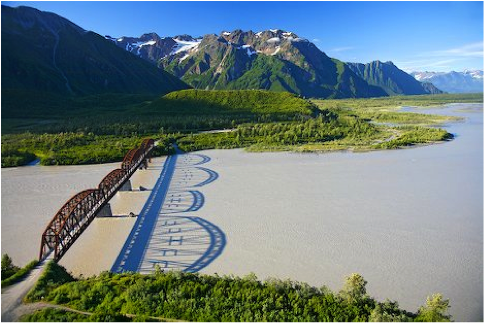Small Projects
SSI Bridge: Evaluation of Soil-Structure Interaction Effects of PNW Bridges
University: Oregon State University, Small Projects Year 1 (2012-2013)
PIs: Andre Barbosa, Ben Mason (OSU)
Dates: 03/01/2012 – 11/01/2013
Final Project Report: PacTrans-8-OSU-Mason
The Pacific Northwest (PNW) is prone to large subduction zone earthquakes, large basin-and-range earthquakes, and smaller, shallow, crustal earthquakes. Each of these different types of creates a different type of demand on a soil-bridge system. A subduction zone event, for instance, creates large magnitude, long-duration and long-period events that can damage long, flexible bridges. A shallow, crustal event, when it occurs near a bridge, can create an intense velocity pulse that can damage shorter, more brittle bridges. In addition to the challenges presented by considering multiple earthquake scenarios, the soil underlying bridge columns and abutments can significantly affect the seismic response of the overlying bridge superstructure. To truly examine the seismic performance of a bridge, one must consider soil-structure interaction.
Use of Blended Synthetic Fibers to Reduce Cracking Risk in High Performance Concrete
University: Oregon State University, Small Projects Year 1 (2012-2013)
PI: Jason Ideker (OSU)
Dates: 03/01/2012 – 11/01/2013
Final Project Report: PacTrans-11-OSU-Ideker
Early-age bridge deck cracking is a major concern for many DOTs throughout the United States and specifically those in the Pacific Northwest. Cracking within the first months of a bridge deck’s lifespan severely hinders its long-term performance and durability, ultimately reducing the sustainability of this crucial piece of transportation infrastructure. Increased maintenance costs, driver interruptions and possible damage to bridge structure are also a result.
Rendering of Dense, Point Cloud Data in a High Fidelity Driving Simulator
University: Oregon State University, Small Projects Year 1 (2012-2013)
PIs: David Hurwitz, Michael Olsen (OSU)
Dates: 03/01/2012 – 11/01/2013
Final Project Report: PacTrans-10-OSU-Hurwitz
This project will develop tools to advance the use of 3D design technologies by departments of transportation. A two-dimensional (2D), paper-based methodology for infrastructure design is currently the most prevalent approach implemented by DOTs across the country. This method traditionally involves the coordination of a series of separate plan (horizontal) and profile (vertical) layouts. Unfortunately, 2D design is inherently limited for effective assessment of alternative designs, which is critical for evaluating optimal design outcomes. 2D infrastructure design also has the potential to emphasize the mobility of vehicular throughput to the detriment of alternative modes of transport. Oh and Stuerzlinger (2004) show an example of how a 3D, digital environment enables even novice users to create structurally complex scenes in the initial conceptual stage of design.
Second Generation Accessible Pedestrian Systems
University: Small Projects Year 1 (2012-2013), University of Idaho
PIs: Richard Wall, Denise Bauer (UI)
Dates: 03/01/2012 – 11/01/2013
Final Project Report: PacTrans-16-UI-Bauer
As signal timing plans and intersection infrastructure get ever more complex in attempts to reduce vehicle delays at intersections, pedestrians are confronted with pedestrian operations that are shoehorned into traffic plans designed so that pedestrians have minimal impact on the travel time for vehicles. Wide-radius right turn lanes and roundabouts have long been recognized as particularly dangerous intersection designs for pedestrians. Just as traffic controllers are programmed for customized operations at each intersection, so too must the systems that interact with pedestrians be customized to provide a consistency of expectation for operations.
Estimating Future Flood Frequency and Magnitude in Basins Affected by Glacier Wastage
University: Small Projects Year 1 (2012-2013), University of Alaska, Fairbanks
PI: Anna Liljedahl (UAF)
Dates: 03/01/2012 – 11/01/2013

Infrastructure, such as bridge crossings, require informed structural designs in order to be effective and reliable for decades. A typical bridge is intended to operate for 75 years or more, a period of time anticipated to exhibit a warming climate and, consequently, hydrologic changes (IPCC 2007). An understanding of present and future possible hydrologic conditions is necessary to avoid damage to critical infrastructure and costly disruptions to Alaska’s transportation network.


